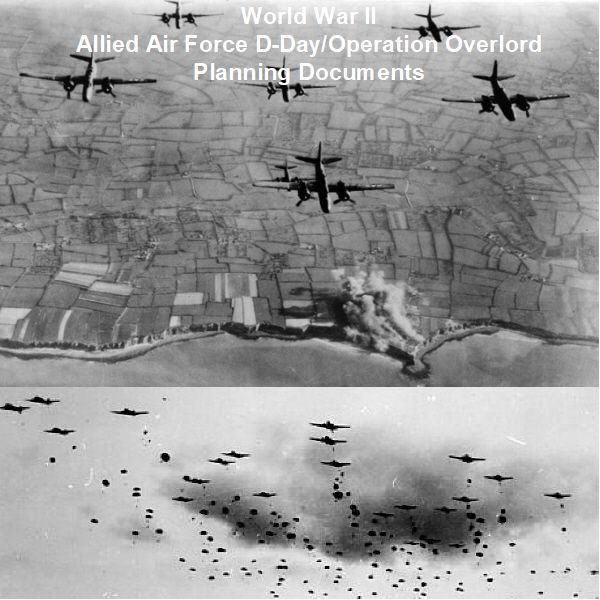
World War II: Allied Air Force D-Day/Operation Overlord Planning Documents
$19.50
Description
Operation Overlord: Planning and Key Events
Timeline of Main Events (Based on Provided Source)
- August 1943: The Combined Chiefs of Staff approve the general tactical plan for Operation Overlord.
- 1942: The Allies begin a strategic bombing campaign. This campaign aims to secure air superiority over the English Channel, which is achieved and allows for vital aerial reconnaissance of German coastal defenses.
- 1942 (November): The code words “To Gib” are stamped on the papers of officers going to Gibraltar for the invasion of North Africa. These words are later reversed to create the highly secret code word BIGOT for Overlord planning.
- 1943: The British initiate Operation Bodyline, which is later renamed Operation Crossbow on November 15, 1943. The objective is to direct Allied air power against German rocket sites threatening the English homeland.
- December 1943 – June 1944: Operation Crossbow is actively carried out with the short-term military objective of preventing V-weapon attacks from disrupting Operation Overlord and a long-term political objective.
- Early Months Before D-Day (1944): Allied air forces intensify their efforts to weaken German infrastructure in northern France, specifically targeting railways and bridges. They also successfully degrade the strength of the German air force.
- April 19, 1944: General Eisenhower, at the request of the British War Cabinet, directs that Crossbow attacks are to have absolute priority over all other air operations, except for the most urgent requirements for Overlord.
- June 6, 1944 (D-Day): Operation Overlord commences with the Normandy landings (codenamed Operation Neptune). Allied air power achieves overwhelming strength, resulting in minimal presence of the German air force. Allied planes play a crucial role in attacking German troops and restricting their movement throughout the Overlord campaign. Heavy German anti-aircraft fire causes significant Allied aircraft losses and disrupts paratrooper deployments.
- Post June 6, 1944: With the Allied landings on the French coast occurring without significant V-weapon attacks on London or southern England, the short-term objective of Operation Crossbow is considered fulfilled.
- 1943: Initial planning begins for operations in the event of German surrender under code names Rankin and Talisman, led by the Chief of Staff to the Supreme Allied Commander (COSSAC).
- Later: These earlier plans evolve into Operation Eclipse, which encompasses plans and preparations for operations in Europe upon German surrender and also a later plan by SHAEF for the occupation of Germany.
- (Timeframe not explicitly stated): Plans for Operation Linnet, an invasion of the Netherlands, are abandoned and essentially replaced by Operation Market Garden (though this replacement is not detailed in this source).
- Throughout WWII: The Allies utilize barrage balloons as a defensive measure against aircraft attacks.
- Throughout WWII: The Allies conduct extensive photographic reconnaissance and interpretation, providing crucial intelligence on German coastal defenses. Allied air forces fly over 14,000 sorties in support of the D-Day landings.
- (Timeframe not explicitly stated): Memos circulate between Eisenhower, Spaatz, Arnold, and Marshall concerning shortages of air personnel and equipment within the buildup of the U.S. Army Air Forces in the UK.
Cast of Characters (Principle People Mentioned)
- Eisenhower, Dwight D.: (General, U.S. Army) Supreme Commander of the Allied Expeditionary Force (SHAEF). Played a crucial role in the planning and execution of Operation Overlord. Directed the prioritization of Operation Crossbow attacks.
- Spaatz, Carl: (General, U.S. Army Air Forces): A high-ranking commander in the U.S. Army Air Forces involved in discussions and planning related to the air component of Operation Overlord, including addressing personnel and equipment shortages in the UK.
- Arnold, Henry H. (“Hap”): (General of the Army/General of the Air Force, U.S. Army Air Forces): Another key leader in the U.S. Army Air Forces who would have been involved in the strategic planning and logistical aspects of the air war, including the buildup of forces in the UK and support for Overlord.
- Marshall, George C.: (General of the Army, U.S. Army Chief of Staff): The Chief of Staff of the U.S. Army, heavily involved in the overall strategic planning and resource allocation for the war effort, including Operation Overlord and the deployment of air power.
- Chief of Staff to the Supreme Allied Commander (COSSAC): (Rank and name not specified in the source) Held a leadership role in the initial planning for post-surrender operations in Europe, leading to the development of the Rankin and Talisman plans, which later evolved into Operation Eclipse.
World War II: Allied Air Force D-Day/Operation Overlord Planning Documents
3,608 pages of material.
2,290 pages of Royal Air Force copies of original source material, Allied Air Force messages, reports, directives, and other records related to the plans and operations of Allied Air Force Units for D-DAY – Operation Overlord – Normandy Invasion.
Plus 1,318 pages of related secondary source material – official military histories.
Operation Overlord was the codename for the Allied operation that launched the successful invasion of German-occupied Western Europe during World War II. The operation was launched on 6 June 1944 with the Normandy landings (Operation Neptune, commonly known as D-Day).
The allies were planning for the invasion of German occupied Europe for more than two years before D-Day. In August 1943, the Combined Chiefs of Staff had approved the general tactical plan for Operation Overlord. In the last few months before D-Day, the Allied air forces wrecked the railways and bridges of northern France and achieved the necessary weakening of German air force strength. On D-Day such was the overwhelming strength of Allied air power that little was seen of the German air force during D-Day. Throughout Overlord, Allied planes played a vital role in attacking German troops and restricting their movement.
BIGOT was a code word within a code word, a security classification beyond Top Secret. BIGOT was the highest level of security clearance, introduced by the Allies to help keep their Overlord plans secret. When planners adopted Neptune as the code word for the naval and amphibious aspects of the invasion, they realized that greater protection had to be given to any document or map that even hinted at the time and place of D-Day. They chose the code word BIGOT by reversing the letters of two words—To Gib—that had been stamped on the papers of officers going to Gibraltar for the invasion of North Africa in November 1942.
ALLIED AIR FORCE MESSAGES, REPORTS, DIRECTIVES, AND OTHER RECORDS
Categories of the BIGOT classified Allied Air Force Overlord documents in this collection from Royal Air Force include:
Photographic Reconnaissance and Interpretation
The Allies began a strategic bombing campaign in 1942. Achievement of the bombing goals secured air superiority over the English Channel which allowed the Allies to carry out aerial reconnaissance, giving them vital intelligence on German coastal defenses. Allied air forces flew over 14,000 sorties in support of the landings on D-Day. Having secured air supremacy prior to the invasion, most of these flights were unchallenged by the Luftwaffe.
Antiaircraft Defense on the Continent in Connection with Overlord
To combat German anti-aircraft fire the Allies decided to use anti-aircraft smoke. The anti-aircraft fire from the Germans during the invasion was so heavy that many planes were lost, including 42 C-47s, the transport aircraft used to deliver the paratroopers, each with as many as 20 men aboard. Heavy anti-aircraft fire forced planes evading the fire to drop paratroopers off target. Many pilots did not slowdown to the proper speed. This resulted in many paratroopers having their weapons and equipment ripped off them as they leapt into the prop blast behind the aircrafts’ engines.
Buildup of U.S. Army Air Forces in the UK
Memos between Eisenhower, Spaatz, Arnold and Marshall on shortages of needed air personnel and equipment.
Crossbow – Current Operations and effect on Overlord
The British were very concerned that efforts be made to reduce the threat of rockets fired by Germany targeting the English homeland. In 1943 the British started Operation Bodyline which was later renamed Crossbow on November 15, 1943, to direct airpower resources against sites related to the German rockets.
Crossbow was the code name of the World War II campaign of Anglo-American “operations against all phases of the German long-range weapons programme. It included operations against research and development of the weapons, their manufacture, transportation and their launching sites, and against missiles in flight.
At the request of the British War Cabinet, on April 19, 1944 General Eisenhower directed Crossbow attacks to have absolute priority over all other air operations, except the most urgent requirements for Overlord. CROSSBOW operations from December 1943 through June 1944 had been carried out with a short-term military objective and a long-term political one. The immediate goal was to prevent the Germans from using V weapon bombardment to disrupt or otherwise interfere with Operation OVERLORD. When Allied troops landed on the French coast on June 6, 1944, without an attack on London or the southern coast of England, by V rockets the short-term objective was known to have been fulfilled.
Operations Eclipse and Talisman
Allied Air Force in Operation Eclipse. The code word ECLIPSE was used for plans and preparations for operations in Europe in the event of German surrender. Operation Eclipse was also a later plan of the Supreme Headquarters Allied Expeditionary Force (SHAEF) for the occupation of Germany. It came from a number of earlier plans (Rankin and Talisman), which had been started in 1943 under the leadership of the Chief of Staff to the Supreme Allied Commander (COSSAC).
Operation Linnet
Abandoned plans for invasion of the Netherlands essentially replaced by Operation Market Garden.
Barrage Balloons
Allied Air Forces use of barrage balloons. A barrage balloon is a large kite balloon used to defend against aircraft attack by raising aloft cables which pose a collision risk, making the attacker’s approach more difficult.
SECONDARY SOURCE MATERIAL – OFFICIAL MILITARY HISTORIES
ARMY AIR FORCES STATIONS (2005) – A Guide to the Stations Where U .S . Army Air Forces Personnel Served in the United Kingdom During World War II.
AIR FORCE COMBAT UNITS OF WORLD WAR II (1983) – Air Force Combat Units of World War II serves a very special historical function. It traces the lineage of each Army Air Corps and U.S. Air Force combat group or higher organization active in World War II, from its origins to 1956. It is a concise official record of those units: their assignments,
subordinate organizations, stations, commanders, campaigns, aircraft, and decorations.
PREEMPTIVE DEFENSE ALLIED AIR POWER VERSUS HITLER’S V-WEAPONS, 1943–1945 (1998)
THE WAR DEPARTMENT: STRATEGIC PLANNING FOR COALITION WARFARE 1943-1944 (1959) – From the Army Office of the Chief of Military History.









Related products
-
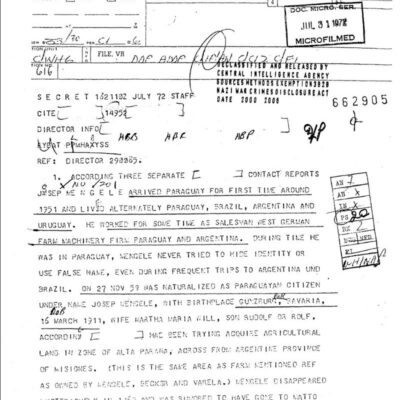
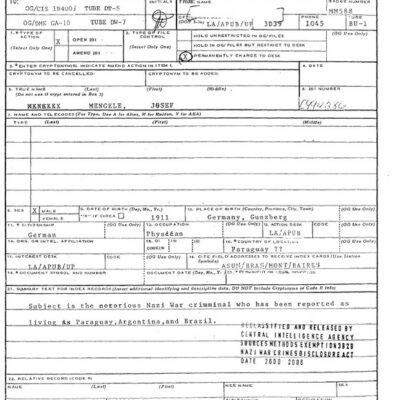
Josef Mengele CIA Files
$19.50 Add to Cart -
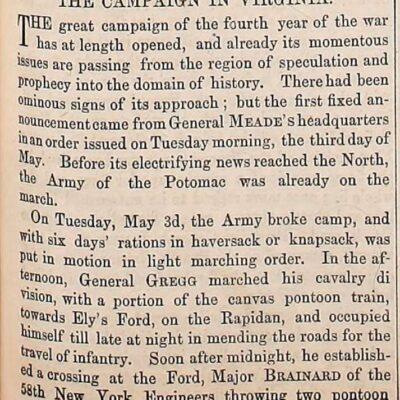
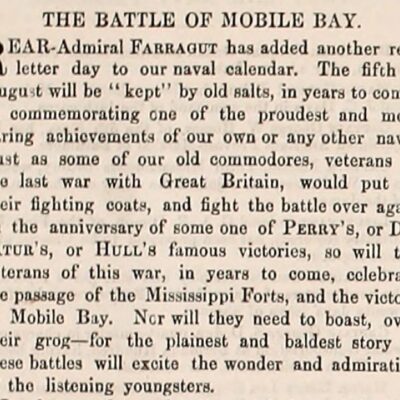
Civil War: Army Navy Journal & Gazette Volume 1 (1863 – 1864)
$19.50 Add to Cart -
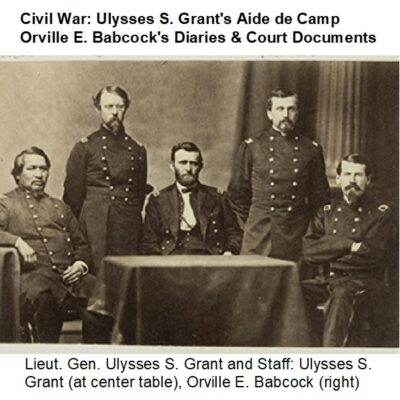
Civil War Ulysses S. Grant’s Aide de Camp Orville E. Babcock’s Diaries & Court Documents
$3.94 Add to Cart -
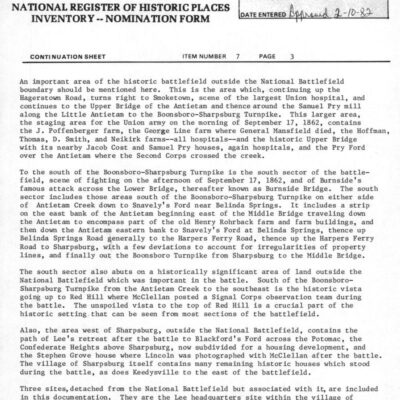
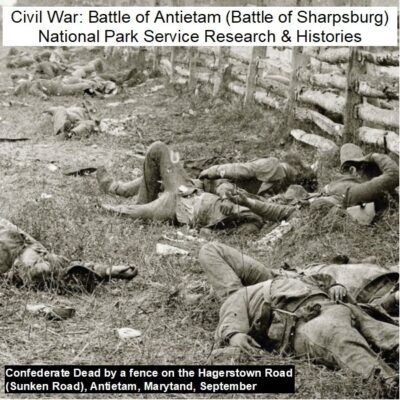
Civil War: Battle of Antietam (Sharpsburg) – National Park Service Archives
$9.99 Add to Cart